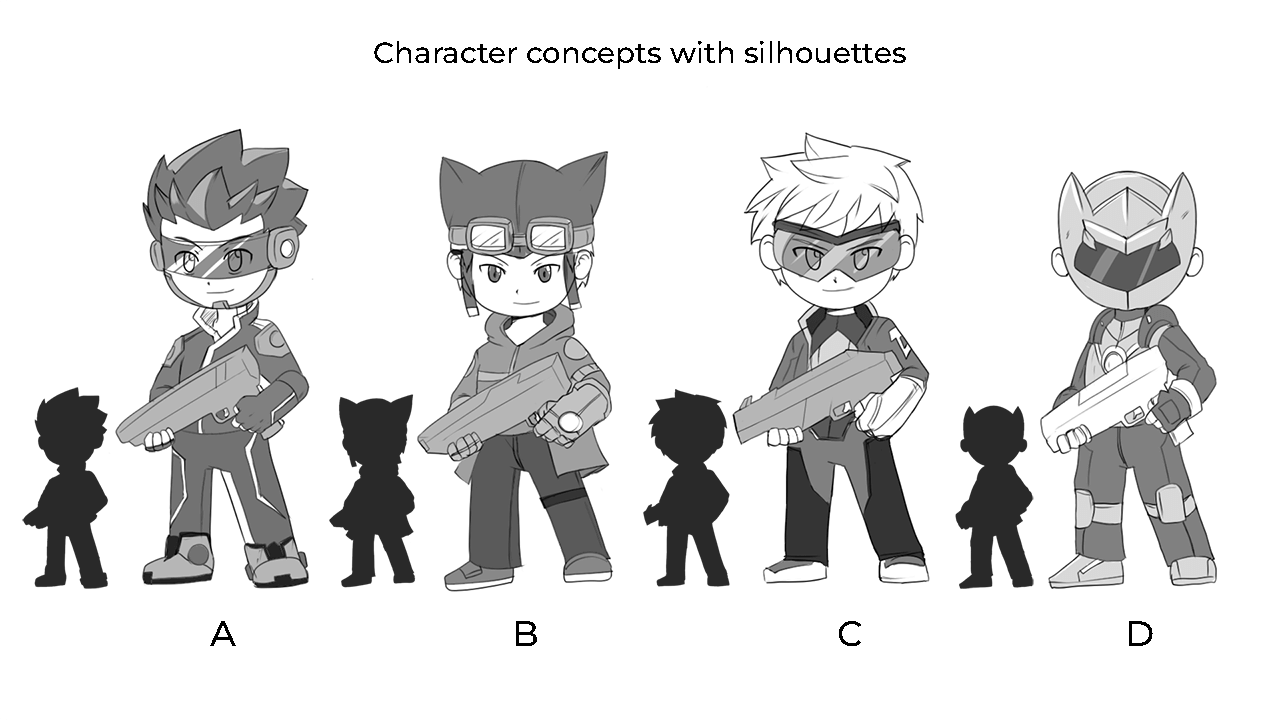A game with well-designed and captivating characters can elevate the gaming experience and make it memorable for players. While simple and casual games may not always need a character, having one can enhance the gameplay experience if the players feel captivated by the characters.
Gameplay is the most important part of making the game enjoyable, but character designs will be a major highlight for your visual experience as a player. You interact with the characters, you interact as them, and you see them most of the time in a game.
In this two-part series, I will explain some of the basic character design elements and my creation process of the main character for one of our games, Mighty Survivor Force:
Research, Audience and Theme
Before creating the characters, you must know why you are making them. Does this game really need characters? If yes, do you need to create realistic humans or cartoon styled beings?
First, you need to understand the game you are creating with your team. For instance, if you were creating a medieval fantasy RPG, you would think of knights or wizards. But if the theme of your game was futuristic sci-fi, knights and wizards wouldn’t work well there.
You also need to think about the audience for your game. Realistic human anatomy and designs will work for games like GTA, where teens or older players may want to experience realistic things in virtual form. Heavily styled games like Super Mario Brothers and Rayman, with different shape designs, will cater more to children.
Once you’ve finalized the game mechanics and story, research similar games and other media like movies or shows. Collecting visual references and familiarizing yourself with the genre will help you to find your intended style more quickly.
When it came to Mighty Survivor Force, we had planned to create an action-shooter game. With this in mind, we needed a main character with some weapons. Fleshing out the world-building aspects will also help you focus on a specific theme.
The game's story revolved around a group of agents fighting monster enemies and protecting the power gems from a scientist who wanted to collect them for evil purposes. With this, the world was set. It was time to introduce the character.

Writing a backstory about your character will help you in the creation process. Thinking about the character's origins, personality, and goals will also streamline your drawing process, where you will not stray too far away from the original theme intended for the character.
Shape Design and Silhouette
Shape design is very important in character design. Physical characteristics help the viewer judge and understand the characters without interacting with them at first glance. The words they speak, their movements, and their actions are secondary to whether the players like or dislike the character further.
Shape design may not always be necessary for character design, especially if the game has realistic proportions. But it will still be helpful. A thin, small character might look weak, whereas a big, bulky one might feel like the strongest.
If you are creating stylistic characters similar to Pixar or making monster designs, shapes will be essential in making them unique and easily recognizable. These will also help design mascot characters for games or brands. These interpretations of the player may not always be correct, but they usually feel this way when looking at the designs. So you, as the designer, will be able to influence their first opinion of the character.

The character having round, soft corners will look friendly and cute. The one with sharp, hard lines and edges looks more serious and less approachable to some degree. You can further try shape design by making silhouettes of your characters and seeing whether they are easily recognisable or similar to other designs. This will help to make your character more recognizable. If all of your characters stand together and far away, will the viewer be able to differentiate them easily? The silhouette must have distinctive shapes and convey the key elements and structure of the character.
Usually, this will not be a one-and-done process. Create multiple iterations and get feedback from your team. Revise and refine the design by incorporating feedback. When you are so focused on this character that you are building their story and personality, ask your peers what they think your character’s personality is. This will help you realize whether your character is conveyed as expected and will resonate with the viewers.
In the next article, I will explain further my steps by making character sheets and colouring these characters.
Thank you for reading this article. See you in the next part of this series.
